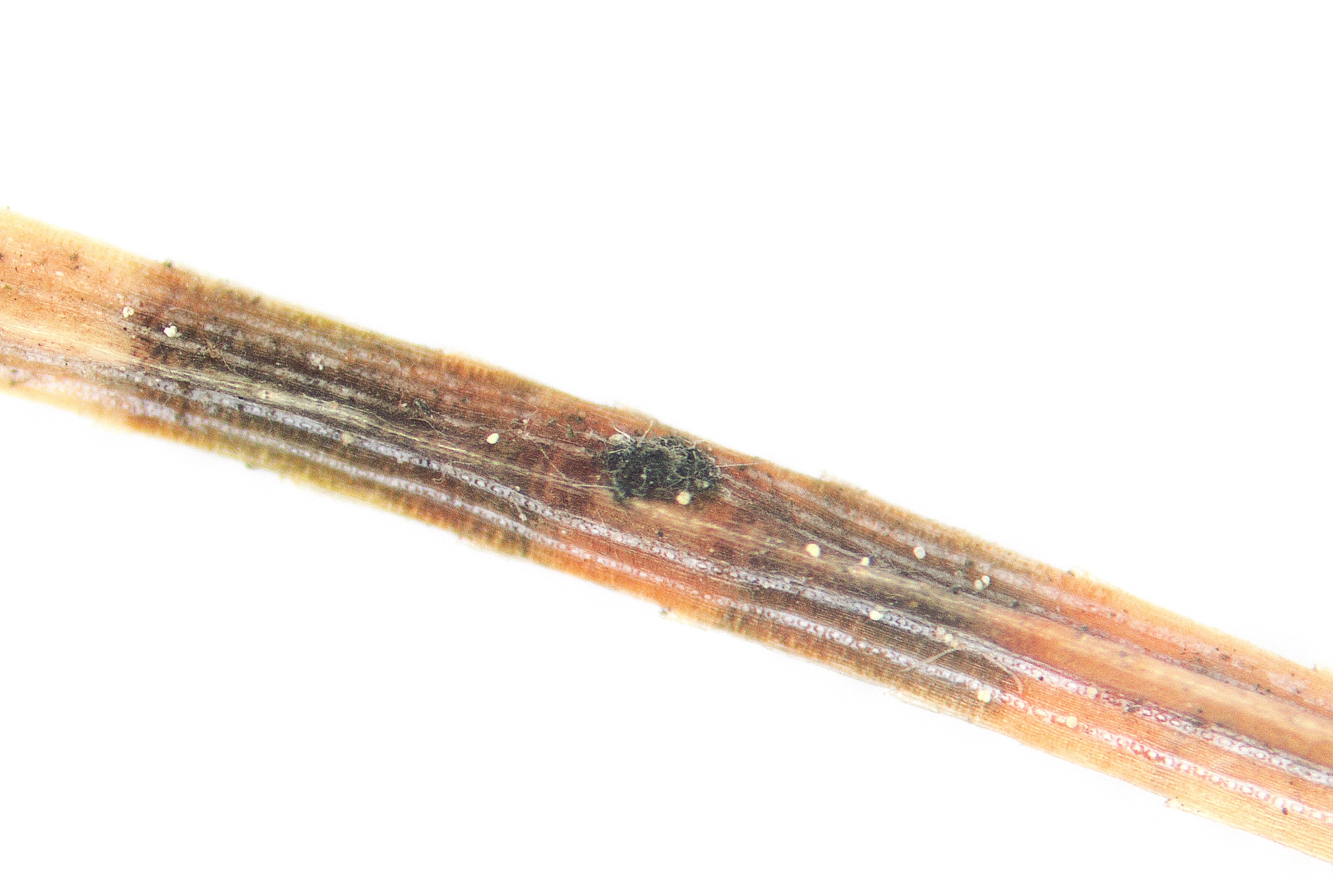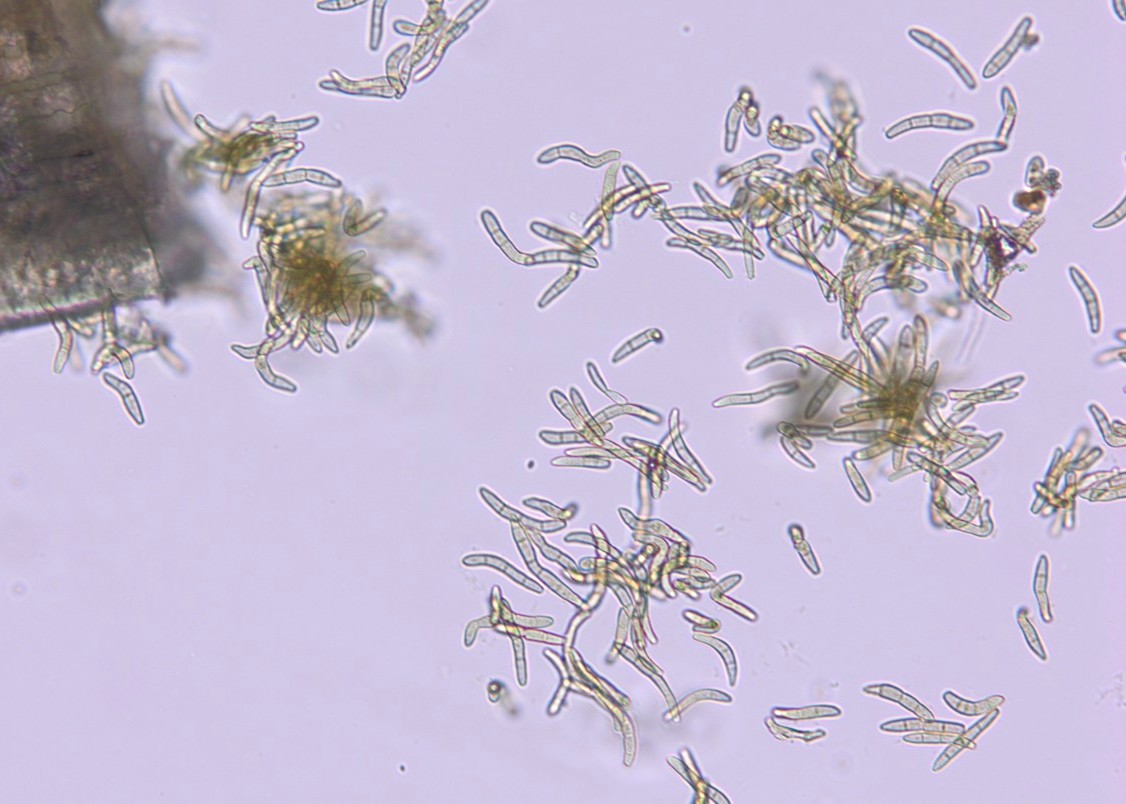
Brown Spot Needle Blight (BSNB)
Pathogen
Lecanosticta acicola (formerly Mycosphaerella dearnessii)
Hosts
This pathogen infects pines (Pinus), such as Eastern white pines, Scots pines, ponderosa pines, and Austrian pines.
Signs and Symptoms
Symptoms develop on needles produced in the previous year. The tips of infected needles turn brown while the base and midsection of the needles remain green. Infected needles sometimes develop brown bands. Within the discolored bands, small black bumps (acervuli) may be seen breaching the surface of the needle. The infected needles eventually turn fully brown and fall off the tree, leaving most of the limbs bare. Limbs near the bottom of the tree are more prone to infection because the environment there is more conducive to disease development. Needles closer to the trunk often appear to be more severely infected than those farthest from the trunk, as L. acicola can persist in branch tissue, serving as an additional source of inoculum.



Spread
The pathogen that causes BSNB spreads by wind, rain, and contaminated pruning tools. L. acicola can spread from both shed infected needles and those still attached to the tree. Once L. acicola has infected a tree in the area, infections can recur annually under favorable conditions. The pathogen thrives in warm, wet, and humid environments and infects needles when they are wet.
Management
Due to the persistence of L. acicola inoculum, the disease can be difficult to manage. Fungicides may be used to protect young pines from infection, but once a pine is infected, the affected areas should be pruned off with clean tools and disposed of, as branch tissue can serve as an additional source of inoculum. Fallen needles should also be collected and disposed of. Thinning the lower canopy can help improve air flow.



 Print
Print Email
Email




